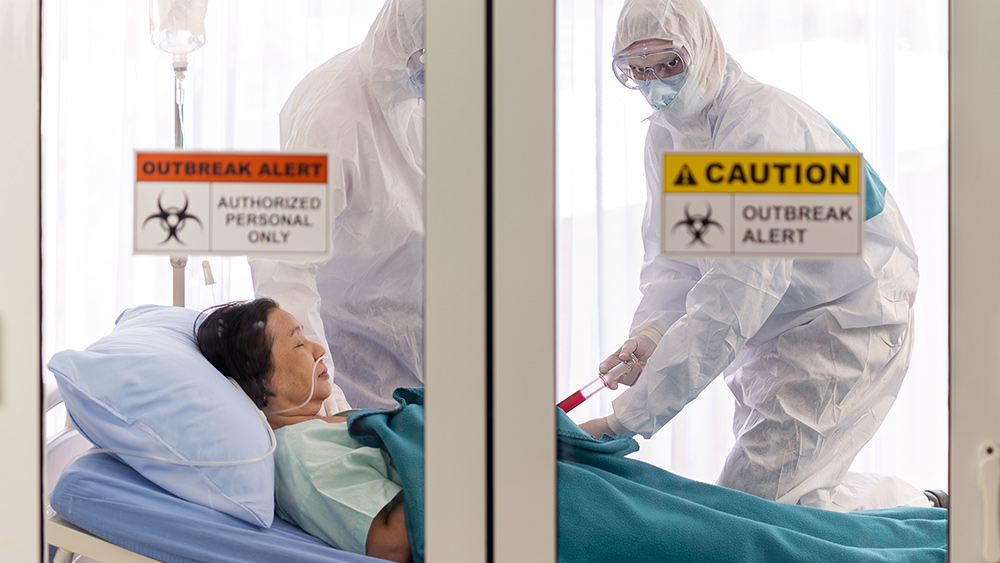What’s in it? Probiotic product labels need to be more detailed so consumers can make informed decisions, suggest researchers
03/09/2020 / By Franz Walker

As probiotic products often contain live microorganisms such as bacteria or yeast, it’s important that people know exactly what they’re getting when they buy probiotic supplements. However, a study has found that most probiotic product labels are sorely lacking in the information that consumers need in order to make informed decisions about them.
The study, conducted by researchers at the Georgetown University Medical Center, found out that only 35 percent of the probiotic products they sampled had labels that linked to the products’ medical efficacy. In addition, the study stated that while the remaining 65 percent of products might be supported by clinical studies, the researchers weren’t able to track down the evidence due to insufficient labeling.
Digging deep into the labeling of probiotics
To conduct their research, the team led by Dan Merenstein, director of research programs for the Department of Family Medicine at Georgetown University School of Medicine, purchased 93 different bottles of probiotics from four large national probiotic retailers in the Washington, D.C. area. Using the labeling in the bottles, the team tried to see if they could track down the medical efficacy of the product from the labeling alone.
To this end, the researchers considered a product to be supported by evidence if the label disclosed the strain of bacteria or yeast used and if the strain was stated to be present at a beneficial dose. In addition to this, the team also looked to see if at least on controlled human study supporting the use of the probiotic was listed on PubMed, a web-based search engine for biomedicine and health studies.
Of the 93 bottles of probiotic supplements that they purchased, the researchers found that only 33 fit within their criteria. Merenstein also noted that just because a bottle had a higher number of strains, a higher dose or greater cost did not mean that it was associated with any medical evidence.
“It may be counter-intuitive to consumers, but we found that products with fewer strains and lower cost were more likely to be supported by evidence we could trace,” sated Dr. Merenstein.
An even greater cause for concern was the fact that none of the 33 bottles that fit within the team’s criteria had labels that directly linked to evidence that the probiotics inside were clinically beneficial. This means that consumers would still have to do some legwork to get the information they need.
Despite insufficient labeling however, probiotics do work. In 2014, a group of experts, including two who were involved in the Georgetown study, affirmed the definition of probiotics. They stated that probiotics are “live microorganisms that, when administered in adequate amounts, confer a health benefit on the host.”
As the use of probiotics increases, more studies have come out that several strains work as intended. However, some studies have also shown that other strains don’t work any better than a placebo. Manufacturers, on the other hand, are required to demonstrate that the probiotics they sell are labeled in a manner that’s truthful and not misleading to the consumer.
Of the 93 products, the researchers judged 67 to be “unique” based on their strain composition. This however included some that did not disclose strains on their label as their precise compositions could not be determined. Other products listed strains that were known to be beneficial, however, the dosages of these strains were not listed. As such, the researchers could not determine if these strains were present in an effective dose. (Related: Researchers look at the benefits of probiotic supplementation in elderly.)
Getting the right probiotics
With the issues regarding the labeling on probiotic products, choosing the right ones can be difficult. Fortunately, the study does give some hints as to how to get this information, such as by reading the label on the bottle and looking at resources online to know what’s exactly inside the product.
Another way to get your fill of probiotics, however, is through food. A number of foods come with probiotics, the most common of which are fermented dairy products like yogurt. Going for foods like these could be a better alternative to supplements.
Sources include:
.
Tagged Under: bacteria, choices, consumers, health, labeling, priobiotics, Probiotic Supplements, products, supplements, yeast

















